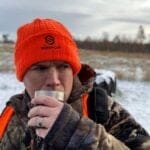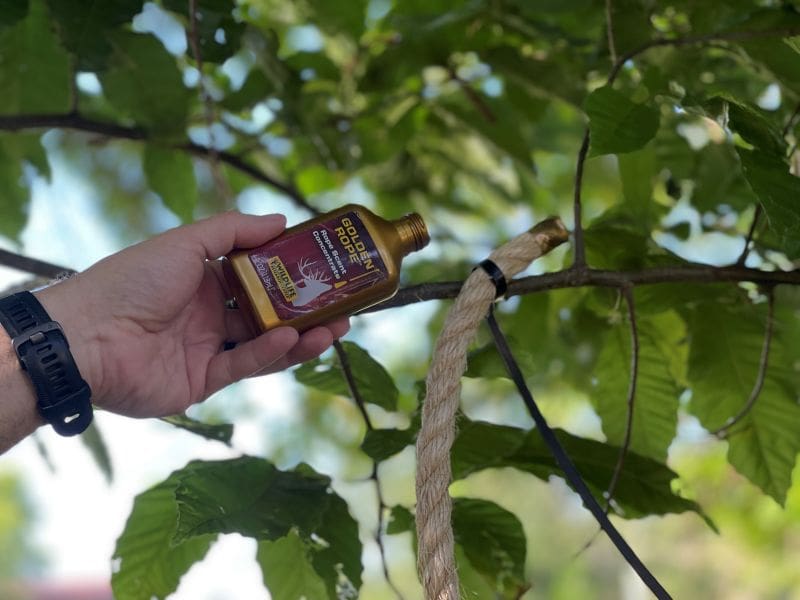For whitetail hunters, summer is all about preparation. It’s the season for scouting, honing shooting skills, fine-tuning gear, and running trail cameras to gather the intel that will guide your fall strategy. While mineral sites and feed attractants are popular choices for drawing deer into camera range, more hunters are starting to use a lesser-known but highly effective tactic: the summer mock scrape. These scrapes truly produce results and may be one of the most overlooked tools in your scouting arsenal. By drawing early-season attention from both bucks and does, they offer valuable insight into local deer behavior and movement patterns.
When I first gained access to a several hundred-acre farm in southern Missouri, I began placing trail cameras throughout the property to learn how deer were moving, identify the local buck population, and determine the best spots for treestand setups. At the time, Missouri regulations allowed the use of minerals and supplemental feed, provided they were removed at least fifteen days before the hunting season began. However, the farm was also home to more than a hundred head of cattle, which quickly proved to be a major obstacle. The cows devoured every bit of feed and mineral I put out, and many of my camera cards ended up filled with images of livestock instead of deer.
To complicate things further, the area is now part of a CWD management zone, which prohibits the use of any feed or minerals altogether. That left me wondering how to draw deer reliably in front of my cameras. That’s when I discovered the value of summer mock scrapes. Unlike feed, mock scrapes don’t attract cattle, but they do grab the attention of curious bucks.
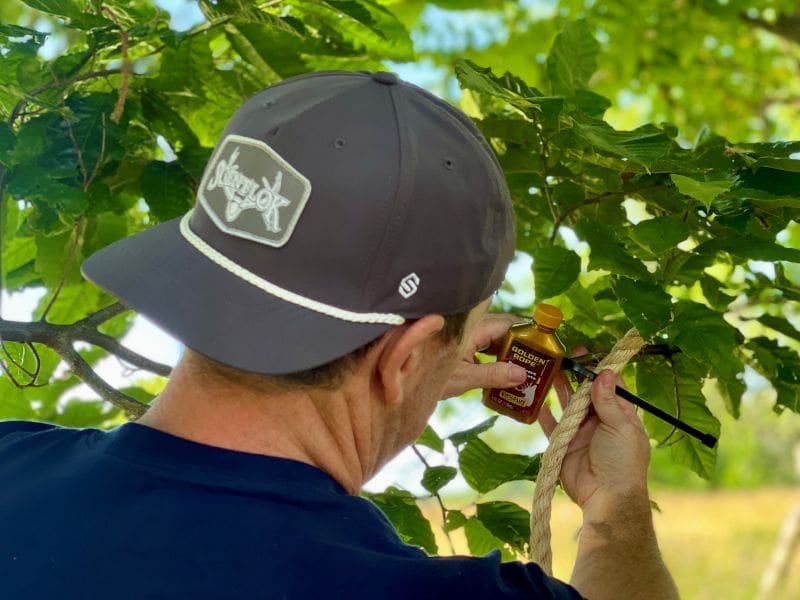
What Are Summer Scrapes
A scrape is a physical sign left by deer, most often bucks, and typically consists of a pawed-out area on the ground beneath a licking branch. When hunters picture a scrape, they usually imagine fresh fall leaves cleared away to reveal bare earth, a classic sign of rut activity. In the fall, scrapes play a major role in buck communication, closely tied to dominance and breeding behavior. Bucks urinate in them, rub-urinate (allowing urine to run over their tarsal glands), and deposit scent from their forehead and preorbital glands on a licking branch above.
But scrapes aren’t just a fall phenomenon. Even in summer, when deer aren’t in the breeding phase, they still interact with scrapes, especially the licking branch. Young bucks and does will often visit these branches out of curiosity and for social interaction. Bucks traveling in bachelor groups may also begin laying the foundation for dominance well before shedding velvet, using licking branches to leave early scent markers. This behavior makes mock scrapes a surprisingly effective summer tactic for drawing deer in and capturing valuable trail camera photos.
Why Summer Scrapes Work for Game Cameras
There are several reasons why summer scrapes can be highly effective for capturing quality trail camera photos. First is the natural curiosity of whitetails. A freshly made mock scrape, especially one with a strategically placed licking branch, stands out like a billboard in their home range, making it almost impossible for them to ignore.
Second is the role of early social communication. Even while still in velvet, bucks begin to establish pecking orders and define their home ranges during the summer months. Scrapes provide a low-pressure, natural way for deer to communicate without the intensity or aggression of the rut. This is why bucks are often more likely to appear at summer scrapes than at other natural travel routes.
During this time of year, bucks tend to follow stable feeding and bedding routines. When a mock scrape is placed along these patterns or just off trails near food sources or bedding cover, it often results in regular and consistent buck activity on camera.
Ideal for Public Land and Non-Baiting Scenarios
One of the biggest advantages of using summer mock scrapes is that they are both legal and low-impact. In the CWD zones where I’ve hunted in recent years, using bait or mineral supplements is prohibited on private land. Similar restrictions are also enforced on many public lands across the country. In areas where feeding is banned or where hunter pressure is high, a well-placed mock scrape can quietly attract deer to your camera without drawing attention or violating regulations.
I’ve recently put this method to use on my private land, which is also used for cattle grazing. Traditional feed sites quickly get trampled or eaten by livestock, making them unreliable and frustrating. Mock scrapes, however, are subtle and “cow-proof” when placed carefully, often along timber edges or in fencerows where cattle are less likely to roam.
Even on private land where baiting is allowed, summer mock scrapes offer a smart alternative or supplement to feeding. They don’t require constant maintenance, they’re less likely to attract nuisance animals like raccoons, and they avoid the risk of changing natural deer movement the way large bait piles can. In short, mock scrapes invite the right kind of attention, drawing in deer while keeping everything else away.
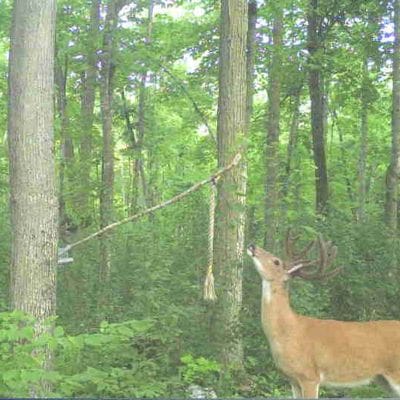
How to Make a Summer Mock Scrape
Making a summer mock scrape is quick and simple, and it doesn’t require much gear. Choose the right spot by looking for field edges, well-worn trails, or staging areas where you see deer signs. Avoid placing scrapes directly in bedding areas. Next, establish a licking branch, or you can use a scrape rope. Recently, I have been using Wildlife Research Center’s Golden Rope Scent Rope Kit, which includes a 30-inch rope and a 4-oz bottle of Golden Rope concentrate scent. The height of your rope or branch is crucial for a successful summer scrape. Hang a branch or rope about chest-high (3.5–4 feet off the ground) and secure it so it doesn’t swing in the wind. Grape vines, twisted cedar twigs, or overhanging limbs all work well, too. With my rope, it comes with zip ties for easy attachment to a limb.
After your licking branch or scent rope is set up,use a stick, boot heel, or small rake to create a scrape beneath the branch. You don’t need to overdo it; just mimic the appearance of a real scrape. In the summer, I usually make my scrapes a bit smaller because deer aren’t going to come and tear them apart like they do in the fall. It’s more about curiosity. Once the dirt is exposed, you can then add deer scent, a gland lure, or a curiosity rope scent, such as WRC’s Golden Rope scent, to jump-start the action. Many deer will find and use the scrape solely out of curiosity.
After creating the scrape and applying scent, position your trail camera to face the scrape at an angle, minimizing direct sunlight and ensuring good image quality. Cellular cameras like the Stealth Cam Deceptor, paired with a solar panel, are excellent for set-it-and-forget-it situations.
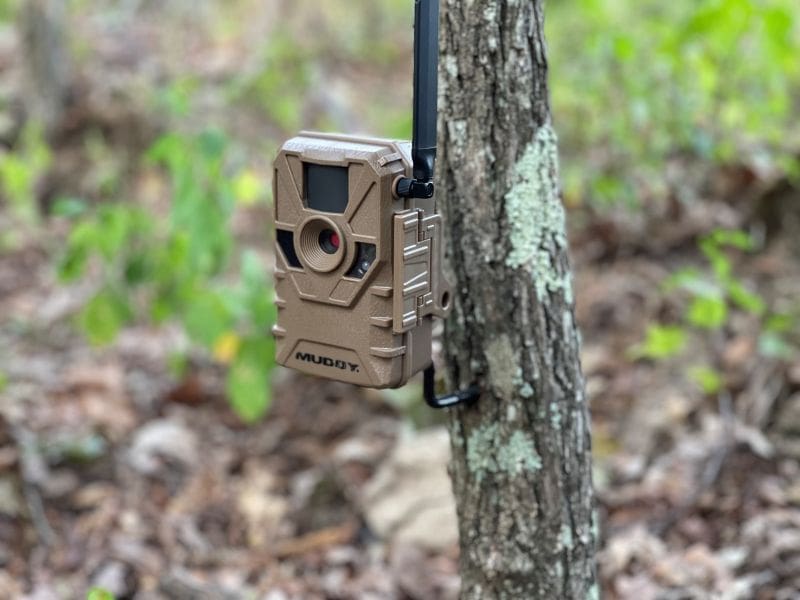
Do summer scrapes really work? Absolutely. While they may not get as much attention as mineral sites or food plots, they’re a highly effective, low-maintenance, and legal way to attract deer to your cameras year-round. Whether you hunt on public land, in farm country with cattle, or on a small private plot where feeding isn’t an option, mock scrapes can help you gather valuable summer intel and build your hit list well before opening day. I have set up as many as six different cameras on one farm, all with summer scrapes as the main attractant. It offers a change of pace from getting two or three hundred pictures a day over food, yet the quality of buck data that can be obtained is worth it. Give it a try yourself.
